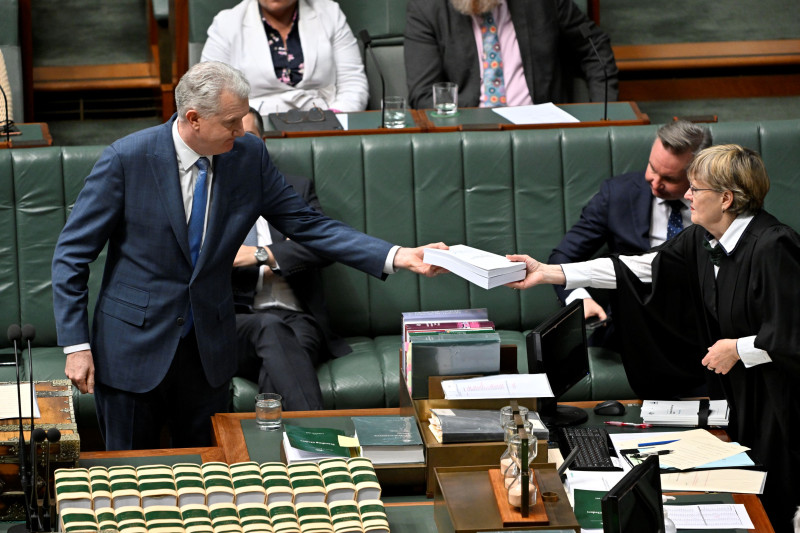How is a law removed or repealed in Australia and what is the process?
Repealing a law (which means undoing or removing it) requires the same process as making a new law. A repeal bill – a proposal to remove all or part of a law – must be introduced, debated and agreed to by both the Senate and House of Representatives before it is signed into law by the Governor-General. The repeal bill will say when it comes into force.
There are many reasons why the Australian Parliament might agree to repeal an existing law. For example, the law might be outdated or the government might want to deal with an issue differently.
Some laws do not need to be repealed because they have an expiry date called a sunset clause. All delegated law made by ministers and government departments has an expiry date unless the Parliament decides to renew it.
A minister introducing a bill in the House of Representatives

David Foote/DPS Auspic
Description
A minister hands a stack of documents to the Clerk in the House of Representatives, introducing a bill to Parliament. Introducing the bill is the first step in the law-making process. After this, the bill must go through several stages before it becomes a law. If both the House of Representatives and the Senate agree to the bill, it is sent to the Governor-General for Royal Assent and becomes law.
Permission should be sought from DPS AUSPIC for third-party or commercial uses of this image. To contact DPS AUSPIC email: auspic@aph.gov.au or phone: 02 6277 3342.